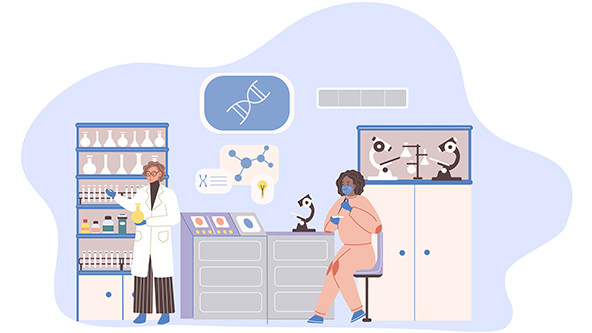 (Illustration by iStock/Svetlana Ikriannikova)
(Illustration by iStock/Svetlana Ikriannikova)
We don’t mean the former Facebook. Rather, philanthropies should prefer to fund meta-issues—i.e., research and evaluation, along with efforts to improve research quality. In many cases, it would be far more impactful than what they are doing now.
This is true at two levels.
First, suppose you want to support a certain cause–economic development in Africa, or criminal justice reform in the US, etc. You could spend millions or even billions on that cause.
But let’s go meta: a force multiplier would be funding high-quality research on what works on those issues. If you invest significantly in social and behavioral science research, you might find innumerable ways to improve on the existing status quo of donations.
Are you enjoying this article? Read more like this, plus SSIR's full archive of content, when you subscribe.
Instead of only helping the existing nonprofits who seek to address economic development or criminal justice reform, you’d be helping to figure out what works and what doesn’t. The result could be a much better set of investments for all donors.
Perhaps some of your initial ideas end up not working, when exhaustively researched. At worst, that’s a temporary embarrassment, but it’s actually all for the better—now you and others know to avoid wasting more money on those ideas. Perhaps some of your favored policies are indeed good ideas (e.g., vaccination), but don’t have anywhere near enough take-up by the affected populations. Social and behavioral science research (as in the Social Science Research Council’s Mercury Project) could help find cost-effective ways to solve that problem.
The same is true for the biomedical sciences as well. If you care about cancer treatment, you could easily give away substantial sums of money paying for people to access treatment. That would certainly help those people financially, and perhaps in terms of their health as well. (The median new cancer drug improves lifespan by only around two months, so good health outcomes are by no means guaranteed.)
On the other hand, you could invest in innovative cancer research. That research may or may not pay off, but if you managed to help scientists discover another drug like Gleevec (a drug that raised the five-year survival rate for chronic myelogenous leukemia from 30 percent to 89 percent), it would have much more impact on cancer than just paying for an existing treatment that isn’t very good.
But the meta-issues don’t stop there.
Suppose that you want to support academic research in a given area—be it economic development, criminal justice reform, cancer or genetics research, etc.
Unfortunately, some academic research isn’t that great–it doesn’t use solid statistical methods, or it doesn’t collect an adequate sample size, etc. That’s why we have a significant reproducibility problem in numerous fields. If you want to support research on a given issue, you should also want the research there to be accurate and reproducible.
At the same time, a lot of academic research is fairly marginal and incremental, because our federal funding system (despite protests to the contrary) often tends to favor such research in peer review (which focuses on achieving consensus rather than on funding risky ideas). It is routine to hear top scientists (even Nobel winners) say their research agenda would be more ambitious if they didn’t have to cater to the expectations of funders.
Thus, let’s go meta once again: If you want to affect a given field, a high-leverage approach would be to fund meta-efforts to improve the research (such as reproducibility or innovation).
Let’s take an example: psychology.
If you were a funder in 2012 who believed strongly in academic psychology, you could have put your money into, say, 100 psychology experiments. At the end of the day, you’d have produced a large stack of papers, some of which might be important, and some of which might even be true.
But what if, instead, you did what one of us (Stuart) did while at the Arnold Foundation: Fund someone like Center for Open Science co-founder Brian Nosek to systematically replicate 100 psychology experiments and produce a groundbreaking paper assessing the field? You’d be able to impact tens of thousands of subsequent psychology papers (as well as many papers in other disciplines!) by creating momentum for improved standards in the field. After all, that project found that fewer than half of psychology papers could be successfully replicated, which led journals and researchers to improve their practices.
Or consider clinical trials in medicine. You could spend $30 million on one clinical trial of a particular cancer or Alzheimer’s drug. Or you could spend $30 million to try to improve the regulatory and technological obstacles to doing quick and efficient clinical trials. If successful, you might enable lots of $3 million clinical trials to occur that never would have been possible otherwise.
To be sure, we’re not suggesting a hard-and-fast rule, and there are many reasons that a philanthropy might choose to focus more on direct services or on public policy. Moreover, there are some foundations with a significant commitment to research and development. Our point is merely that research (and particularly efforts to improve research) are undersupplied, and that there are many unrealized opportunities and even low-hanging fruit.
In short, spending money directly on research and development, or on improving the research and development process, is one of the highest-leveraged ways for philanthropy to actually make a difference in the world.
Support SSIR’s coverage of cross-sector solutions to global challenges.
Help us further the reach of innovative ideas. Donate today.
Read more stories by Stuart Buck & Anna Harvey.

